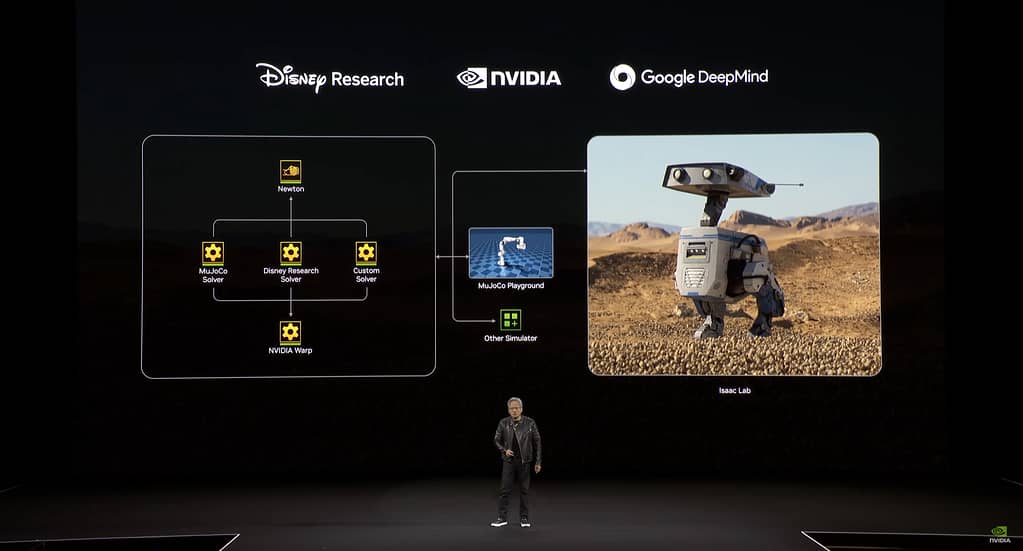CEO of NVIDIA Jensen Huang demonstrated “Blue” – a unique robotic miniautonomous system – through groundbreaking robotics research between NVIDIA, Google DeepMind and Disney Research.

The compact engineered robot demonstrates major progress in robotic locomotion with the introduction of Newton which serves as an open-source physical system that enables behaviors which were not possible in robotic systems before.

The robot receives the inquiry “How do you like your new physics engine?” As Blue operated in front of him Huang asked questions to demonstrate how the advanced technology behind its smooth agile movements functions.
Newton distinguishes itself from fundamental physics engines because it was made explicitly for performing delicate precise movements which represent problems that robotics engineers have always found challenging.
Newton maintains its position as the industry benchmark since it delivers utmost precision simulations for hard and soft objects and essential tactile information. Through its ability robots can learn dexterity which produces movements closer to human activities than the traditional robotic movements made with mechanical stiffness.

The most admirable feature of Newton is its robust computing ability. The engine utilizes NVIDIA’s Warp system for open-source Python framework operations using GPUs instead of CPUs. The novel architectural arrangement makes possible fantastic computational speeds through which 780,000 simulations execute within 11 hours while producing a 40% improvement in robot performance.
The technological advancement delivers extensive benefits beyond faster operations because it successfully addresses a fundamental challenge which has limited robotics advancements. The advanced capabilities of robots such as Blue allow millions of training simulations to occur automatically even without human supervision.
The technological marriage of NVIDIA, Google DeepMind, and Disney has produced Blue as a demonstration of how rapid robotics evolution occurs through corporation-based research collaboration for innovative human-like artificial systems.
The research goes beyond manufacturing applications since it forecasts robotic movements that replicate the graceful behavior of futuristic robotic beings like Star Wars movie characters as described at the presentation.
By showing off this advancement NVIDIA solidifies its position as a leader in AI and robotics innovation which extends its expansion after its core graphical processing operations.
